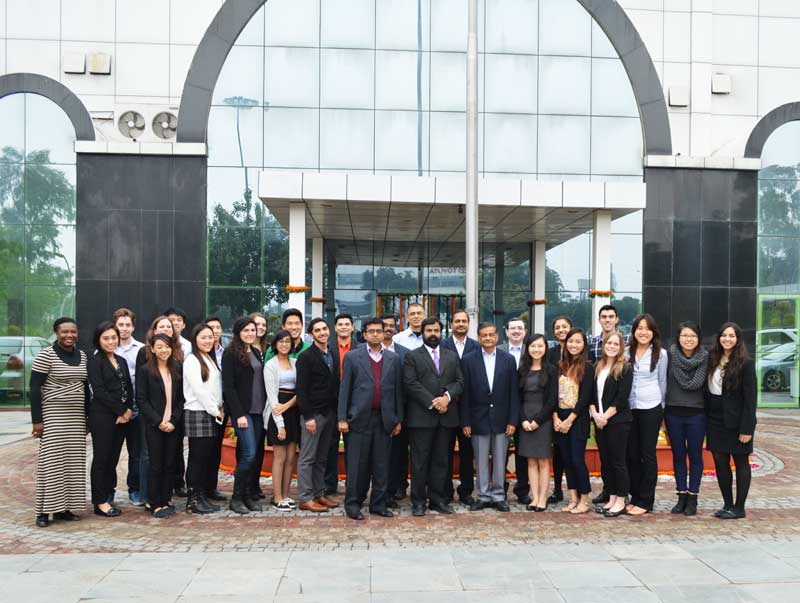Today we had the opportunity to have a very vibrant interactive engagement with the senior executives of HCL. Mr. Param Sigh, Chief Adviser on Smart Cities to the Mayors of San Francisco and Los Angeles, also joined and suggested a frame work for building smart cities.
HCL describes a smart city as a way to effectively deliver public services to citizens and businesses in an integrated and resource-efficient way, while enabling innovative collaborations to improve the quality of life. The primary factors to be considered when building a sustainable smart city is economic prosperity, quality of life, and participatory social engagement. This equation is extremely important to remember when we start building our smart cities, as this equation incorporates the importance of financial, social welfare, and happiness of the relevant community (technical and psychological importance).
 One main takeaway from HCL’s presentation, was that one Smart City model will not fit all, and that all the sectors need to be connected seamlessly and be able to work together. In this technological age, dealing with a city and country with multiple complex issues, the concept of an omni-channel medium is of utmost importance as cities or countries attempt to keep up with technological innovation. If things are not connected, there will be discrepancies in the flow of information, which leads to even bigger problems in the future. It was intriguing to notice that HCL similarly follows the smart city concept emphasized yesterday by AIMA and other organizations about identifying and satisfying basic needs first (obtaining an identity), before moving into financial inclusion (implementing a solution which produces concrete data and accurate monitoring of information). This serves to directly address the main issues of incorporating technology to solve a multi-layer problem.
One main takeaway from HCL’s presentation, was that one Smart City model will not fit all, and that all the sectors need to be connected seamlessly and be able to work together. In this technological age, dealing with a city and country with multiple complex issues, the concept of an omni-channel medium is of utmost importance as cities or countries attempt to keep up with technological innovation. If things are not connected, there will be discrepancies in the flow of information, which leads to even bigger problems in the future. It was intriguing to notice that HCL similarly follows the smart city concept emphasized yesterday by AIMA and other organizations about identifying and satisfying basic needs first (obtaining an identity), before moving into financial inclusion (implementing a solution which produces concrete data and accurate monitoring of information). This serves to directly address the main issues of incorporating technology to solve a multi-layer problem.
Regarding Param Singh’s present approach to building smart cities: the framework shouldn’t be changed, but should adapt to his original proposal. I personally do not see categories such as technology, social, economic, political assessment, intelligent city design, and participative group as horizontal silos because they are not mutually exclusive in the consideration of a smart city model. Agreeably, with the focus of a human centric design (HCD) process, there should be an emphasis that directly reaches out to locals within the community to better understand the major problems that they face everyday. Every smart city framework will be different depending on the city’s unique problems and needs of the community, and by addressing these issues holistically to create a more productive, sustainable, and happier community, it can only be effective as a long-term solution. After identifying the basic needs of the community, the social, economic and political assessment should be prioritized and combined with HCD to create a foundation that the smart city model can be built upon. Comparing potential case scenarios of other countries or cities that face similar issues and identifying the effective technological solutions that may have solved the problem would be useful information. This would combine the technology and intelligent city design categories thereafter, and by constantly involving a participative select group throughout the process, the increase in transparency and constant consultation with the locals would ultimately increase the quality of the smart city solutions, which would eventually derive from the revised framework.
by Isabelle Lee

